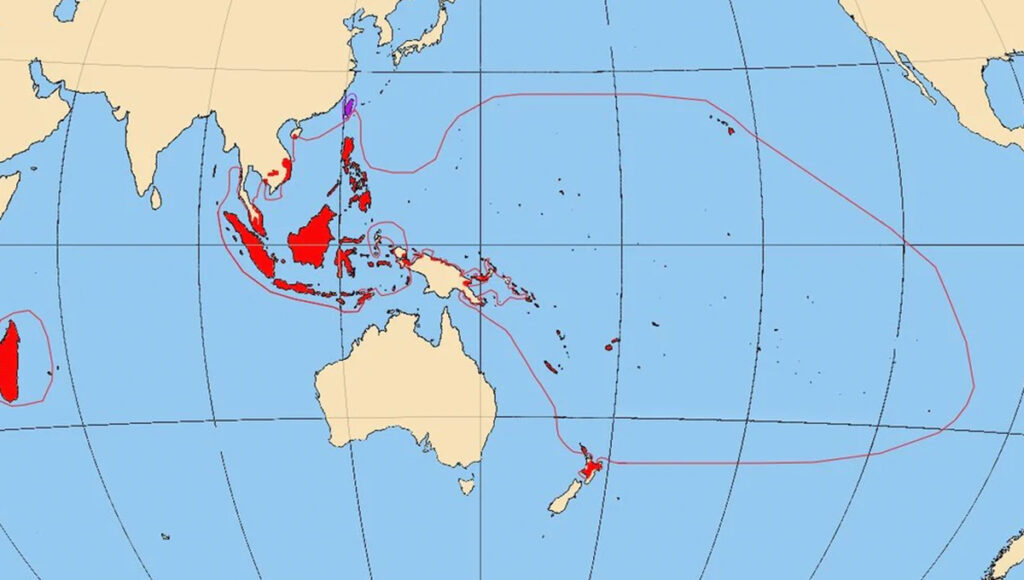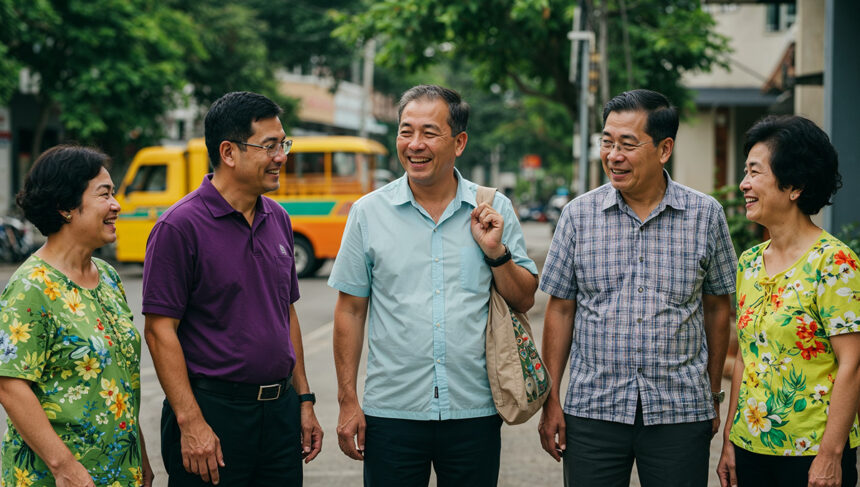The Republic of the Philippines, a stunning archipelago with over 7,600 islands, is being accepted by you! You will discover the beauty where nature is just as beautiful as the chaos and color of humanity just before entering this space. It’s a land where, as the poet Rilke noted, ‘The only journey is the one within,’ yet here, every external journey reveals an inner world of profound linguistic wealth. Forget the simple notion of “many dialects”; you have entered a glorious cradle of 170 to over 185 distinct languages, making it one of the most linguistically diverse nations on Earth! Each tongue is a unique cultural repository, a separate system of communication. May your travels here be, as St. Augustine suggested, ‘to see what you shall see’, a deep appreciation of our people’s resilience and the dazzling tapestry of our tongues. How many dialects in the Philippines is a question that hints at this incredible diversity. The study of Philippines language is a journey in itself.
How Many Dialects in the Philippines?
The Major Pillars: Languages of the Land
The core of the Philippine linguistic system is largely based on a few major regional languages which are the top most spoken languages, having 10+ million speakers each, and thus are the primary cultural identifiers of the island with which they coincide.
Filipino and English: The Official Voice
Coming next after the regional languages we find the two official languages, Filipino and English.
Filipino: Originally planned as the country’s native tongue, Filipino is an improved and further reorganized version of Tagalog, which is the major language of Manila and the adjacent areas of the island of Luzon. At the same time, it is a lingua franca of the country, the common thread that allows a person from Ilocos (the point farther north of the country) to talk to another from the southernmost part of Mindanao. One of the ways they keep it alive is by the incorporation of words and expressions from other indigenous languages along with those of the foreign origin.
English: Despite being essentially an aftereffect of the American colonial period, English continues to be the second official language. It is a language much used in the government, business, higher education, and international communication. The country is among the top English-speaking nations in the world, and one consequence is the regular, easy, and almost spontaneous production of “Taglish” or “Englog”—an enjoyable, convenient mixing of the two.
The Regional Goliaths
While the official four are the most recognized, alongside them are eight to ten languages that are generally considered major regional linguistics belonging to one million speakers each, which are the living proof of the cultural heritage that each place has. The importance and extent of these languages reveal that the country’s voice is not a single entity but a collective one that can be likened to a choir: How many dialects in the Philippines are spoken within these major languages is a further layer of complexity. The sheer number of Filipino languages showcases this heritage. To learn more about the linguistic diversity and history of these languages, visit the Komisyon sa Wikang Filipino, the official government agency for Philippine languages.
Cebuano (or Bisaya): Being the language of the Central Visayas region and those areas of Mindanao, it is believed to be the second most spoken native language, a lively and energetic one that tells the history of the southern islands.
Ilocano (or Iloko): The power-packed Ilocos Region language of Northern Luzon, and its speakers are known to be migratory that is the reason its reach has extended not only to other parts of Luzon but also to different countries where they have moved.
Hiligaynon (or Ilonggo): The singing language of the Western Visayas, the core being Iloilo, which is loved for its gentle and attractive rhythm.
Waray-Waray: The strong voice of the Eastern Visayas, the main area where the language is spoken is the islands of Samar and Leyte and is often associated with the loud and clear tone of the language.
Bikol: It used to be one of the 11 major languages of the Philippine, was actually a collection of very closely related languages and a shared name was given to the group because of that. Kapampangan and Pangasinense: Two major Central Luzon languages, each with a strong cultural identity that reflects the corresponding province.
The Whisper of Islands: The Austronesian Root

Most of the Philippine languages are members of the Austronesian language family, which is like a giant family tree that links the country with the peoples of Southeast Asia and the Pacific, that is from Madagascar to Easter Island. The fact that they all have the same root is the reason for a lot of the similarities in basic vocabulary and the way they all have similar grammatical structures, and that is the reason why a speaker of, e.g., Tagalog, can find common words in Cebuano without the necessity of full comprehension of the whole conversation. The question of how many dialects in the Philippines ultimately stems from this shared linguistic heritage. This deep root is why the term phillipines language covers such a wide spectrum.
The multiplicity of languages is mainly due to the country’s island nature. In the past, the sea was like a road for the movement of people and goods as well as their contact; however, the isolation of the mountains, dense forests, and the very fact of crossing large parts of the sea have allowed small communities to develop their own particular phonetic, lexical, and grammatical features—the dialects—that, according to the concept of branching, eventually have become different languages after thousands of years.
Layers of Influence: A Historical Lexicon
The main language of the Philippines was not, and it is not, a purely local one; on the contrary, it represents a magnificent mosaic which is a reflection of the country’s several centuries of worldwide interaction. The history of the nation is actually its vocabulary: How many dialects in the Philippines have been shaped by these influences is a fascinating area of study.
Spanish Legacy: The heritage of Spain through which the Philippines was under the Spanish crown for three hundred years has been a very significant one. Lots of Spanish words fil in very well with almost each and every one of the native tongues in the country and are used in: languages of religion (Diyos – God), time (oras – hour/time), and everyday items (silya – chair, kutsara – spoon). The complexity of filipino languages reflects this history.
Chavacano: A wonder of the world in terms of language, Chavacano is a creole language based on Spanish, and a different language entirely, that came about by merging Spanish and the local languages of the Philippine islands. Mainly spoken in Zamboanga City, it is like a witness to the historically intimate blending of the peoples and cultures.
Chinese, Malay, and Sanskrit: The acknowledgment of these ancient influences can be seen in the vocabulary derived from precolonial times when the country traded with its Asian neighbors, thereby implying a history of maritime exchange that goes back a millennium.
A Living Legacy: The Challenge of Preservation

The survival of numerous languages might be seen as an ot cultural pride, yet it poses a very big problem. Due to urbanization and the increasing use of Filipino and English, the small indigenous and minority languages, the whispers of the islands, are dying, and some of them will probably become extinct very soon. This makes the answer to how many dialects in the Philippines a constantly changing number. This loss represents a challenge for the preservation of Filipino language, a richness also celebrated during Philippines holidays.
By means of the Mother Tongue-Based Multilingual Education (MTB-MLE) program, the first language of the children (the mother tongue) will be the main medium of instruction in the primary school years. This move is the central attempt in confirming the value of the regional languages and also that the younger generation will still retain their linguistic heritage while at the same time acquiring fluency in Filipino and English. This is crucial given that how many dialects in the Philippines are considered endangered. The rich tapestry of filipino languages must be protected.
Filipino is thus not only a location on the map. It is the lexicon of the kaleidoscope, a strong image of the unity in diversity. No language, no dialectal inflection, is considered insignificant; in fact, every one of them is an essential piece of the national soul, the one that keeps the unique stories, folklores, and the very old wisdom that the country has acquired through time. Asking “ How many dialects in the Philippines?” is like setting off on a voyage which will be revealing not only the number but the very heart of the Filipino people – a lively, complicated, and wonderfully expressive heart.
Conclusion
Understanding how many dialects in the Philippines are spoken offers a deeper appreciation of the nation’s cultural and linguistic diversity. From Tagalog and Cebuano to the many regional languages that shape daily life, each dialect reflects the country’s vibrant identity. Whether you’re exploring the islands or connecting with locals, language plays a key role in every experience. For more insights into Filipino culture and travel inspiration, explore our guide to Festivals in the Philippines and plan your next cultural journey with World Pinoy Flights your trusted partner for unforgettable Philippine adventures.
FAQs for How many dialects in the Philippines
How many distinct languages are spoken in the Philippines?
The Philippines is a country that is reportedly home to 170 to over 185 distinct languages, thus making it one of the most linguistically diverse nations in the world. The number of regional dialects is even higher.
What are the two official languages of the Philippines?
The two official languages are Filipino (a revised, standardized, and more widely accepted version of Tagalog that is the national lingua franca) and English (a language that is extensively used in government, business, and higher education institutions).
What are the major regional languages in the Philippines aside from Filipino and English?
There are about 8 to 10 major regional languages each with more than one million speakers. The most notable ones are Cebuano (or Bisaya), Ilocano (or Iloko), Hiligaynon (or Ilonggo), and Waray-Waray.









